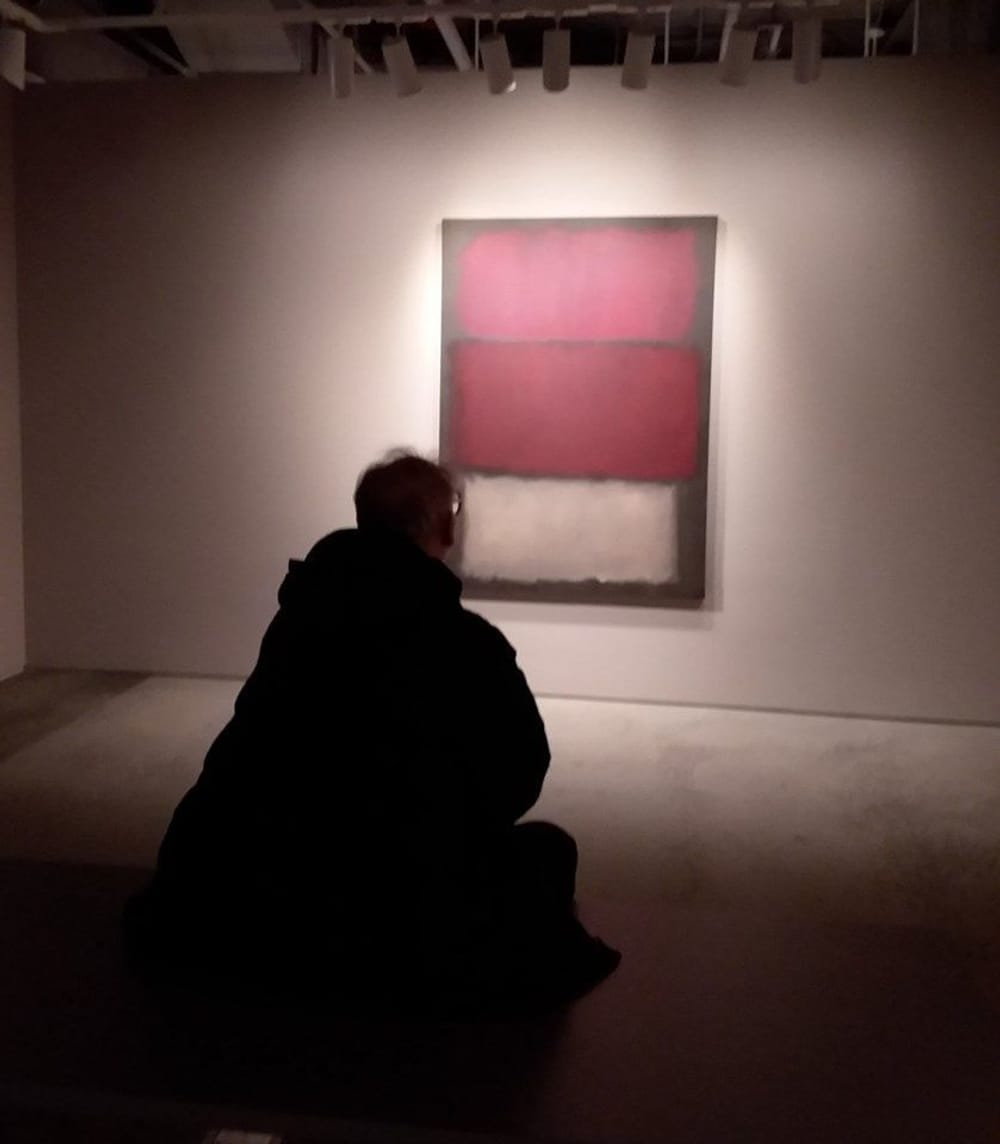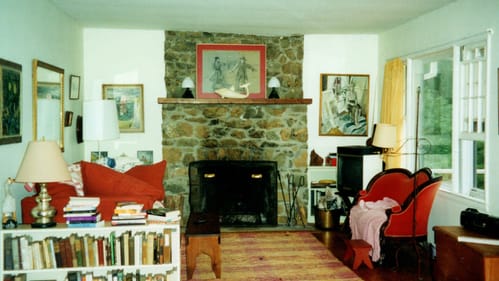Stay in the Loop
BSR publishes on a weekly schedule, with an email newsletter every Wednesday and Thursday morning. There’s no paywall, and subscribing is always free.
Earthy, real, and worth every moment
The heartbreaking luxury of home hospice care

Former president Jimmy Carter’s recent choice to die at home got me thinking about the comfort of home hospice, the cushion of familiar surroundings. When someone you love wants to stay home to die, making it happen for them is a profound gift. It’s not always possible; it’s a luxury. I was lucky to do it for my mother in 2010 and for my husband in 2021. For me, it felt earthy, real, and worth every exhausting, heartbreaking minute.
I didn’t know what I’d find when I flew to Dulles in May of 2010 to visit my ailing mother. She lived in a remote cabin in the Blue Ridge Mountains. Our mother-daughter relationship was fraught—I hadn’t seen her for five years—but there was love; we understood each other. The night I arrived, it was clear she needed medical help. Not an ambulance, but a house call. How could we get one? I soon learned that her doctor had already strongly suggested hospice, which my mother had ignored. I promised to stay with her, and my mother signed on with hospice. Luckily, I’m a freelance writer. If I had a “real job” or my mother’s needs had been beyond me, we’d have been screwed: the local hospice facilities were full. You take what you can get, and what I got was wonderful.
A doctor, a nurse, and a case worker came and checked my mother, and they gave me the confidence to face the task, completely unskilled as I was. Hospice allowed me to ease my spiky, opinionated, smoking-and-drinking mother through her final summer. In a nursing home, she would have had no cigarettes, no scotch. She’d have missed her cats terribly. The summer was traumatic in all kinds of ways (bears broke in twice and scared us badly), but we—or, rather, I—got through it.

Shortly after the initial medical confab, a delivery truck arrived with a load of unexpected things: oxygen tanks, a hospital bed, incontinence pads, a wheelchair, and more. I called the hospice office in wonderment; at the time, my mother could still stagger from her own bed to the bathroom. “When you need these things, you’ll be glad you have them,” I was told. They were right.
“Is it important?”
That summer, I learned that nursing is a series of small and big decisions. That keeping the peace with family is part of the job and nearly impossible on top of the stress and nonstop labor of nursing. That choosing music to play for the patient is bewildering: music made sadness more intense. I learned how to spot signs of pain and how to help when it came creeping. To ask, “Is it important?” when nurses suggested doing something painful or irritating to my mother. If they told me, “It’s important,” we did the thing.
One of those things was moving her to the hospital bed; it’s tricky but worth the effort. (Get all of the bed rails installed, two for each side: upper body and lower body. The upper body rails don’t even slow people down when they forget they can’t just get up and walk to the bathroom.) I dreaded changing diapers, but I did it when the time came, and it wasn’t as bad as I’d feared. Also, there may be blood, bruises, bed sores; hospice nurses help you manage.

By August, I needed help, but home caretaking services are beyond expensive. Pro caretakers also required a bedroom of their own (I slept in the living room), a working television, and someone else buying groceries and cleaning the cats’ litter pan. Confounded, I wrote a plea/job description, offering a decent but not bank-breaking monetary gift, and emailed it to everyone I knew. I was lucky: a dear friend was between jobs, knew my mother, and moved in. I flew home for three weeks. I went back in September, and she died in her sleep a week later.
“No hospital.”
My mother wasn’t in a lot of pain, but my husband was. He hurt his spine and coped for 10 years, but by early 2021 he was faltering. We got our Covid-19 vaccines in April and moved from Manhattan to rural Oregon, close to my husband’s family. He lived only another eight months. We knew he wanted to die at home if possible, and he’d been confirming his advance directive for many years. After he collapsed, he looked his son in the eye and said, “No hospital.”
My two home hospice experiences, 11 years apart, had a couple of similarities. Hospice in Oregon brought us the bed and the meds and gave us a copy of Gone from My Sight by Barbara Karnes, RN. I’d read it in 2010. I don’t know why I was a little surprised to see the exact same book. After all, we humans have been dying for as long as we’ve been living. Anyway, it was a good refresher.
A number of things were different. By December of 2021, hospice services were noticeably pandemic-weary. The nurses were exhausted, and the pharmacy delivery people were stressed—but they were there. As frayed as they were, along with healthcare people everywhere, the Oregonian hospice group gave us the help we needed. Once again, we were not only privileged but extremely lucky that we didn’t have to bring in long-term paid care. I don’t know how we could have afforded it, but we would have done what we had to do. My deepest respect and compassion go to those who face a long illness in their families.

When I nursed my mother, our closest relative lived a five-hour drive from her cabin. By happy contrast, family was only five minutes away in Oregon. What a difference it made! When my husband’s condition plummeted, his daughter and her wife drove up from northern California. Everyone brought their best: we adults worked in shifts to watch over him, holding his hand, monitoring the oxygenator, and soothing the pain. Each of us got to say goodbye, and he surprised us by waking for our farewells.
The consolation of hospice
Caring for someone through illness and death is hard, and I couldn’t have done it without hospice. During the months alone with my mother, I steered my actions by trying to do what I’d be proud to look back on, years later. My decisions weren’t perfect, and I have a couple of sharp regrets, but it was helpful to have a compass.
When you can see your beloved’s death coming, it’s not any easier to bear than if it were sudden and surprising. The loss of my partner is debilitating, unbalancing, alienating. I feel less alone, though, when I consider that we’re all grieving today. All of us have lost the lives we had in pre-pandemic times and many, many of us are reeling from the deaths of people we love. More than a year after my husband’s death, my grief is an unpredictable anguish, but it’s slowly becoming less violent. Plus, I have a consolation. I have the deeply felt humanity in physically caring for him, and my mother, to their last breaths, so they didn’t go through it alone. I am fortunate indeed.
Above: A photo of the writer’s husband, regarding a Rothko. (Photo courtesy of Emily B. Schilling.)
Sign up for our newsletter
All of the week's new articles, all in one place. Sign up for the free weekly BSR newsletters, and don't miss a conversation.

 Emily Schilling
Emily Schilling